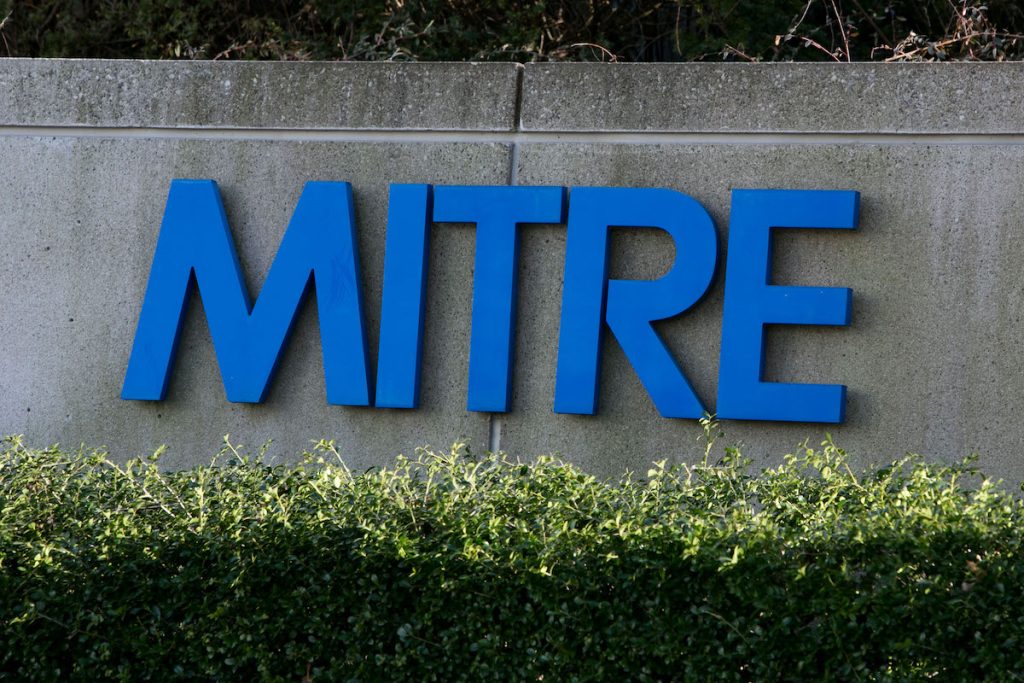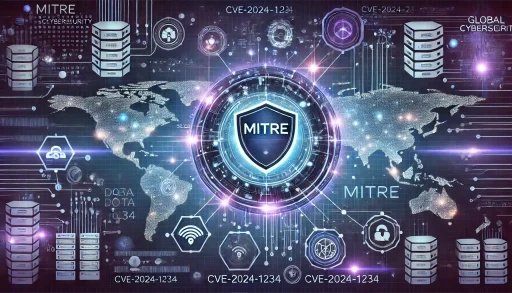In today’s digital age, cybersecurity threats evolve rapidly, posing significant risks to organizations worldwide. The Common Vulnerabilities and Exposures (CVE) program, managed by MITRE, stands as a cornerstone of vulnerability management, providing a standardized framework for identifying and addressing cybersecurity vulnerabilities. This blog post explores the CVE program’s structure, MITRE’s pivotal role, how CVEs populate critical security databases, and the program’s far-reaching implications for cybersecurity, regulatory compliance, and operational efficiency. Written for infosec professionals, researchers, and tech decision-makers, this post underscores why MITRE’s involvement is indispensable.

What is the CVE Program?
The CVE program is a global initiative designed to identify, define, and catalog publicly disclosed cybersecurity vulnerabilities. Each vulnerability receives a unique CVE identifier (e.g., CVE-2024-1234), serving as a universal reference for security professionals, vendors, and organizations. Launched in 1999, the program aims to reduce confusion caused by disparate vulnerability naming systems, fostering collaboration and clarity in addressing security threats. The CVE List, accessible at CVE Program, is a free, publicly available resource sponsored by the U.S. Department of Homeland Security’s Cybersecurity and Infrastructure Security Agency (CISA).
How the CVE Program Functions
The CVE process follows a structured six-step lifecycle, ensuring vulnerabilities are systematically cataloged:
| Step | Phase | Description |
|---|---|---|
| 1 | Discover | An individual or organization identifies a new vulnerability. |
| 2 | Report | The discoverer reports the vulnerability to a CVE Program partner, typically a CVE Numbering Authority (CNA). |
| 3 | Request | The CNA assigns a unique CVE Identifier (CVE ID). |
| 4 | Reserve | The CVE ID is reserved for coordination before public disclosure. |
| 5 | Submit | The CNA provides details, including affected products, versions, and references. |
| 6 | Publish | The CVE Record is published to the CVE List, available for public use. |
This process, detailed at CVE Process, ensures vulnerabilities are consistently documented, enabling IT teams to prioritize and mitigate risks effectively. As of 2024, the CVE List contains over 275,000 records, reflecting its critical role in cybersecurity.

MITRE’s Role in the CVE Program
MITRE, a not-for-profit organization operating federally funded research centers, has been the backbone of the CVE program since its inception. Initially, MITRE served as the sole CNA, assigning all CVE IDs and producing vulnerability descriptions. As the volume of vulnerabilities grew, MITRE transitioned to a federated model in 2016, expanding the network of CNAs to over 400 across 40 countries by 2024, according to the CVE 25th Anniversary Report.

Historical Context of the CVE Program and MITRE’s work
In 1999, MITRE launched the CVE program as a centralized system, producing 321 records annually. By 2016, the program evolved to include 24 CNAs, generating 6,457 records. Today, MITRE oversees a global network, ensuring scalability and expertise in vulnerability management.
Current Responsibilities of MITRE
MITRE’s current role includes:
- Program Oversight: Setting standards and guidelines for CNAs to maintain consistency.
- Coordination: Managing the Council of Roots, which oversees CNAs, including Top-Level Roots and Roots.
- Primary CNA: Assigning CVE IDs for vulnerabilities not covered by other CNAs, acting as the CNA of last resort.
- Editor: Ensuring the quality and accuracy of the CVE List.
- Maintenance: Updating the CVE database and supporting its integration with security tools.
MITRE’s leadership ensures the CVE program remains a trusted resource, as highlighted by its continued operation despite funding concerns in April 2025, resolved through an 11-month contract extension by CISA (CSO Online).
— Cybersecurity and Infrastructure Security Agency (@CISAgov) April 16, 2025
How CVEs Populate Critical Security Databases
CVE records serve as the foundation for numerous security databases, enhancing their utility through enriched data and specialized insights. Two prominent examples are the National Vulnerability Database (NVD) and the OSS Index.
National Vulnerability Database (NVD)
Operated by the National Institute of Standards and Technology (NIST), the NVD synchronizes with the CVE List, incorporating records within an hour of publication (NVD Process). NVD enriches CVE data with:
- CVSS Scores: Assessing vulnerability severity on a 0-10 scale.
- CWE Classifications: Identifying the underlying weakness type.
- CPE Statements: Specifying affected platforms.
- Fix Information: Providing remediation guidance.
This enriched data, available at NVD, enables organizations to prioritize vulnerabilities based on their potential impact, making NVD a critical tool for vulnerability management.
OSS Index
The OSS Index, provided by Sonatype, is a free catalog of open-source components, helping developers identify vulnerabilities in their software dependencies (OSS Index). It primarily maps CVE records to open-source packages, supplemented by Sonatype’s proprietary vulnerability data. This integration allows developers to assess risks in open-source software, ensuring safer application development.
Other databases, such as CVE Details and VULDB, also leverage CVE IDs to provide tailored analyses, demonstrating the program’s broad influence on the cybersecurity ecosystem (Imperva).
Implications of the CVE Program
The CVE program’s impact extends across cybersecurity, regulatory compliance, and operational efficiency, making it indispensable for modern security practices.
Cybersecurity Implications
The CVE program enhances cybersecurity by:
- Standardizing Identification: CVE IDs provide a universal language, reducing confusion and enabling clear communication among stakeholders (Red Hat).
- Facilitating Prioritization: Combined with CVSS scores from NVD, CVE data helps organizations focus on high-severity vulnerabilities.
- Supporting Collaboration: The program fosters cooperation between researchers, vendors, and IT teams, accelerating vulnerability resolution (UpGuard).
- Enabling Automation: Security tools integrate CVE data for automated scanning and threat detection, improving response times.
These benefits make the CVE program a critical component of vulnerability management, as evidenced by its widespread adoption in security tools and advisories.
Regulatory Implications
While not explicitly mandated, the CVE program supports compliance with various regulatory frameworks requiring vulnerability management:
- PCI DSS: Requirement 6.2 mandates protection against known vulnerabilities, often identified through CVE records (PCI DSS).
- HIPAA: Security Rule requirements emphasize addressing vulnerabilities, with CVE serving as a key reference.
- ISO/IEC 27001: Control A.12.6.1 requires timely vulnerability management, supported by CVE data (ISO 27001).
- NIST Cybersecurity Framework: Emphasizes identifying and mitigating vulnerabilities, leveraging CVE as a standard resource.
By providing a comprehensive list of known vulnerabilities, the CVE program helps organizations demonstrate due diligence during compliance audits, ensuring adherence to industry standards.
Operational Implications
The CVE program streamlines organizational operations by:
- Enhancing Efficiency: Standardized CVE IDs simplify vulnerability tracking and remediation, reducing manual effort (BMC Software).
- Improving Communication: Clear identifiers facilitate discussions between internal teams and external stakeholders, such as vendors and customers.
- Integrating with Tools: CVE data is embedded in SIEM systems, vulnerability scanners, and incident response platforms, enabling seamless security operations (Spiceworks).
- Supporting Scalability: The federated CNA model ensures the program can handle the growing volume of vulnerabilities, maintaining operational reliability.
These operational benefits translate into faster response times and more robust security postures for organizations worldwide.
Addressing Challenges and Controversies
Despite its strengths, the CVE program faces challenges, notably funding uncertainties. In April 2025, MITRE warned of potential disruptions due to expiring U.S. government funding, which could impact national vulnerability databases and critical infrastructure (SecurityWeek). CISA’s 11-month contract extension averted immediate concerns, but long-term stability remains a topic of discussion. Additionally, some critics argue that the CVE List may not capture all vulnerabilities, with estimates suggesting a coverage gap of one-third to nearly half (CSO Online). MITRE’s ongoing efforts to expand CNAs and improve processes aim to address these gaps.
Conclusion
The CVE program, under MITRE’s stewardship, is a linchpin of global cybersecurity, providing a standardized, reliable framework for vulnerability management. MITRE’s role in overseeing the program, coordinating CNAs, and maintaining the CVE List ensures its effectiveness and scalability. By feeding critical databases like NVD and OSS Index, the program empowers organizations to prioritize and mitigate risks. Its implications for cybersecurity, regulatory compliance, and operational efficiency underscore its importance, despite challenges like funding uncertainties. As cyber threats continue to evolve, MITRE’s commitment to the CVE program remains vital for safeguarding digital infrastructure worldwide.
Key Citations
- CVE Program Official Website
- National Vulnerability Database (NVD)
- Sonatype OSS Index
- MITRE Corporation
- PCI DSS Standards
- ISO/IEC 27001 Information Security
- CVE 25th Anniversary Report
- CVE Program Averts Funding Crisis
- Red Hat: What is a CVE?
- UpGuard: CVE Explained
- Imperva: CVE and CVSS Vulnerability Scoring
- BMC Software: CVE Overview
- Spiceworks: Understanding CVE
- SecurityWeek: CVE Funding Concerns
- CSO Online: CVE Definition and Purpose
- NVD: CVEs and the NVD Process






